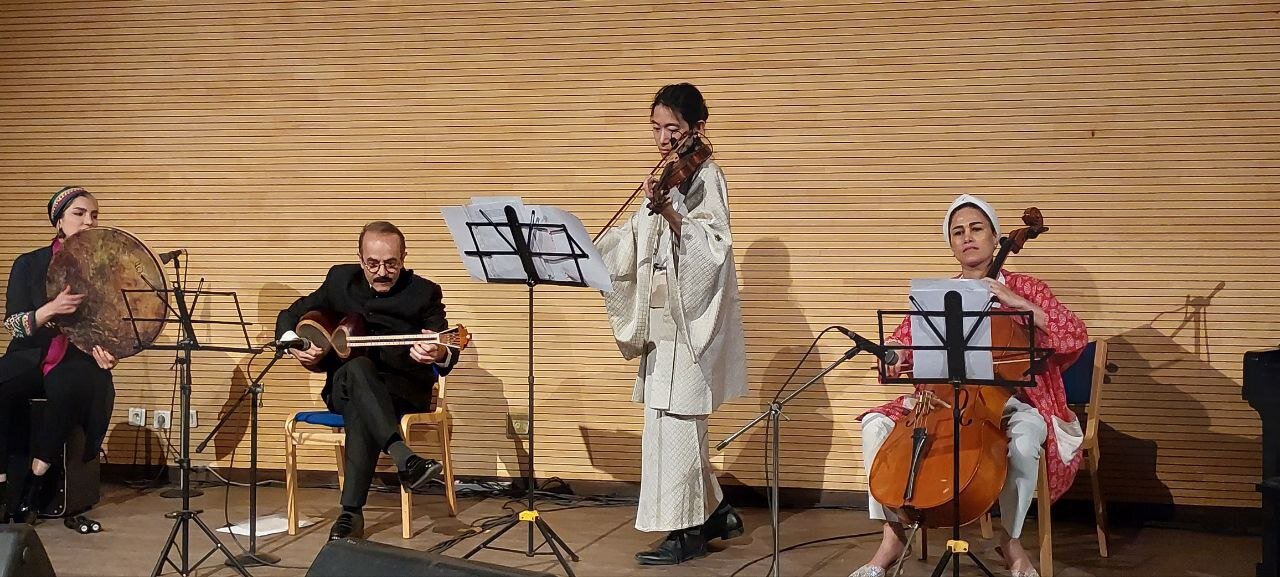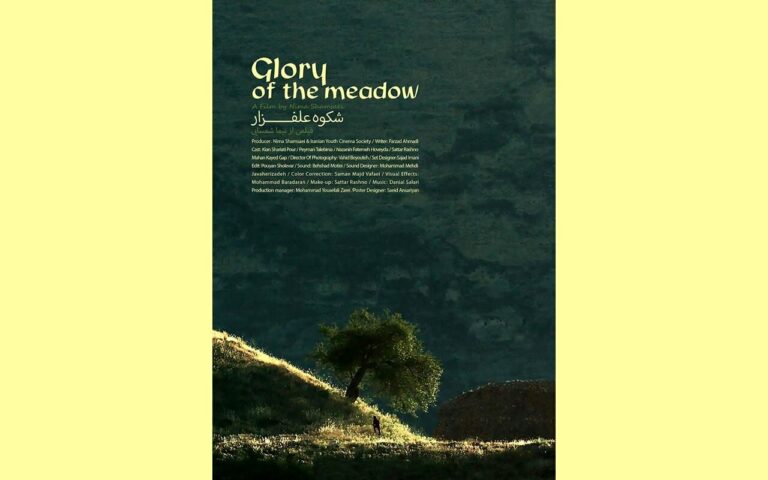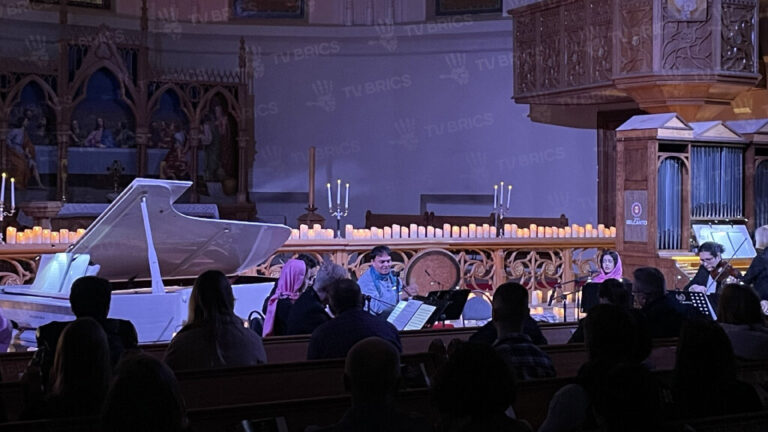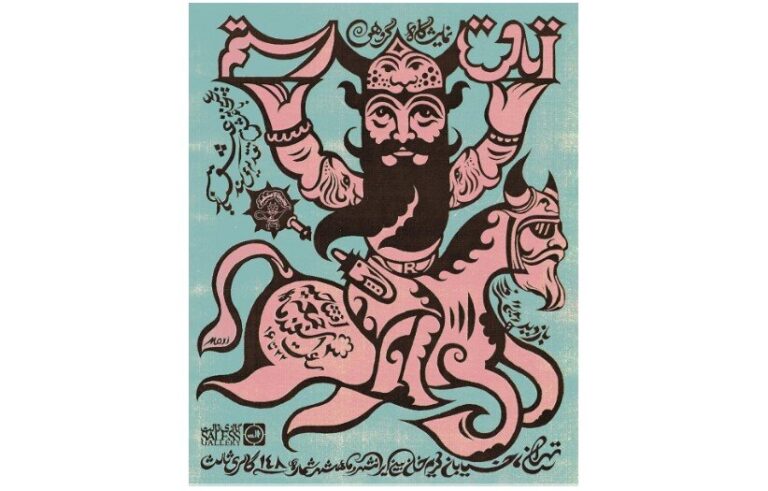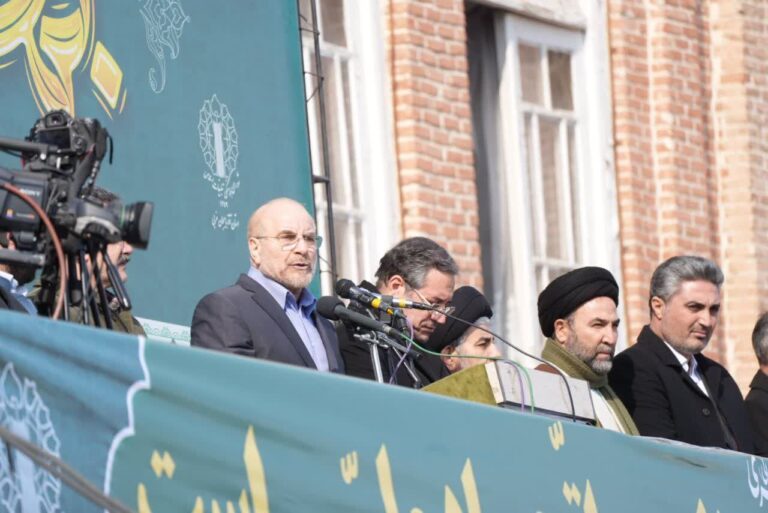Experience the Harmonious Fusion: ‘Melodies of the East’ Concert Celebrates Iran-Japan Cultural Connections
The “Melodies of the East” concert showcased the vibrant cultural collaboration between Iranian and Japanese musicians, featuring the talents of the esteemed Iranian artist Keivan Saket and the skilled Japanese violinist Nagayo Tsumuzi. The event took place on Saturday at the Japanese Embassy in Tehran, attracting foreign ambassadors, Iranian cultural officials, and artists, all of whom celebrated the rich cultural exchange that has flourished between Iran and Japan for centuries.
The concert began with an engaging speech from Adachi Hideaki, the Minister Plenipotentiary of the Japanese Embassy in Iran. In his remarks, he highlighted the significance of the concert in reinforcing the musical ties between the two nations. Adachi traced the historical roots of this relationship back approximately 1300 years to Japan’s Nara period, emphasizing the presence of Iranian Sassanid artifacts, including the ancient Barbat instrument, found in Nara Prefecture as tangible evidence of this longstanding connection facilitated by the Silk Road.
Adachi also expressed his aspirations for continued musical collaborations, particularly in 2029, which will mark the centenary of diplomatic relations between Iran and Japan. This forward-looking vision underscores the importance of cultural exchange in fostering mutual understanding and cooperation.
During the concert, Keivan Saket, a renowned virtuoso of the tar and setar, performed his poignant composition titled “Afsoos” (Regret). He explained that while this piece has been featured in performances around the globe with various orchestras, its presentation at this particular concert held exceptional significance. Saket dedicated this moving piece to the victims of the recent tragedy in Bandar Abbas and the historical atomic bombings of Hiroshima and Nagasaki, emphasizing our shared human experiences of loss and resilience.
He poignantly stated, “Given that we are all saddened by the tragic disaster in Bandar Abbas, I will dedicate this piece to the innocent victims of Bandar Abbas, as well as the victims of Hiroshima and Nagasaki.”
Nagayo Tsumuzi, for his part, shared his reflections on his inaugural visit to Iran. He mentioned that his trip was partly motivated by his desire to record a new music video, supported by Iran’s Art Bureau of the Islamic Ideology Dissemination Organization. Tsumuzi expressed his gratitude to the Iranian Ambassador to Japan, Peyman Sa’adat, who played a crucial role in facilitating his visit.
Inspired by the captivating images of Isfahan, Tsumuzi composed a piece entitled “Cloudy Isfahan,” for which he is currently filming a music video. He also plans to create a video for another composition, “Caravan,” drawing inspiration from the desert caravanserai. The Japanese violinist acknowledged the invaluable support he received from the Art Bureau and the Iranian Ambassador, which allowed him to fulfill his long-held dream of visiting Iran.
During his time in Iran, Tsumuzi embarked on a six-day journey with a diverse group of six individuals, comprising both Iranian and Japanese members. They explored several cities, including Tehran, Isfahan, Kashan, Varzaneh, and Shiraz. Tsumuzi highlighted the successful collaboration during the video filming process, noting how the group transcended national differences to achieve their artistic goals. He emphasized that their journey fostered a deeper mutual understanding of each other’s history and culture, leading him to believe that “countries with deep history get along better.” This perspective positions Iran and Japan as potential partners, given their rich cultural heritages.
Tsumuzi also shared his experiences of the warm hospitality he received in Iran, describing it as “amazing.” He noted the eagerness of the local people to interact with him, taking photos and expressing their friendliness. This positive image of Iran and the amicable relations between the two nations brought him great joy, and he vowed to further strengthen these ties while returning to experience the “parallel hospitality” that he encountered during his visit.
The concert featured an impressive repertoire of ten musical pieces, meticulously crafted by both Saket and Tsumuzi. They were joined by a talented ensemble of Iranian musicians, including Negar E’zazi on the daf and percussion, Siavash Saket on the tonbak, Raha Sajedi on the cello, and Parizad Zeyghami on the piano. This collaboration highlighted the intricate blend of Iranian and Japanese musical traditions.
To conclude the concert, the performers delivered a symbolic rendition of both the national anthem of Japan and the beloved Iranian piece “Ey Iran” (“O Iran”). This poignant moment underscored the unity and friendship that exists between the two nations, beautifully conveyed through the universal language of music.
As the cultural ties between Iran and Japan continue to flourish, events like the “Melodies of the East” concert serve as a testament to the power of music in bridging divides and promoting understanding among nations.
